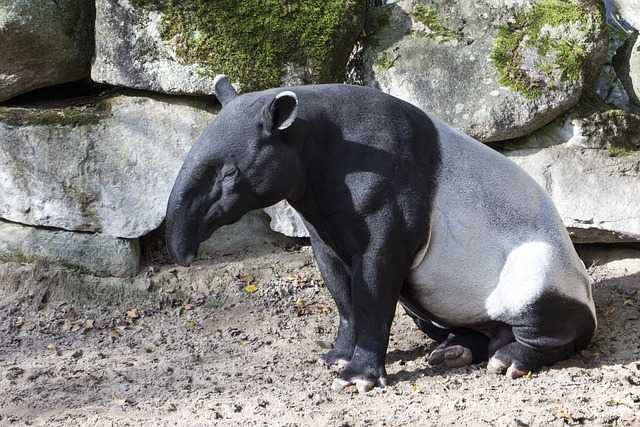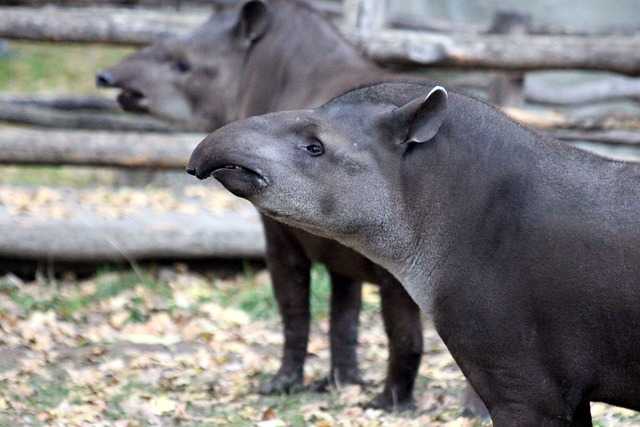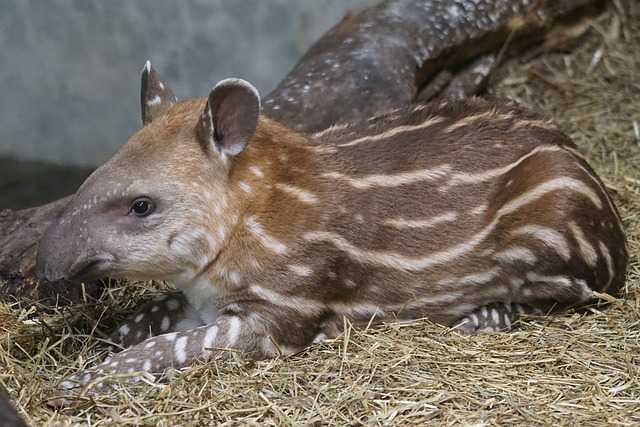Tapirs are large, herbivorous mammals belonging to the family Tapiridae. They are similar in shape to a pig, with a short, prehensile nose trunk.
Tapirs inhabit jungle and forest regions of South and Central America, with one species inhabiting Southeast Asia.
Scientific name: Tapiridae
Higher classification: Tapiroidea
Family: Tapiridae; Brünnich, 1772
Kingdom: Animalia
Order: Perissodactyla
Phylum: Chordata

List of facts
Tapirs inhabit jungle and forest regions of South and Central America, with one species inhabiting Southeast Asia
Tapirs were once widespread in North America until the arrival of humans at the end of the Late Pleistocene, around 12,000 years ago.
The closest extant relatives of the tapirs are the other odd-toed ungulates, which include horses, donkeys, zebras and rhinoceroses.
There are four widely recognized extant species of tapir
They are the South American tapir, the Malayan tapir, Baird’s tapir, and the mountain tapir
A Malayan tapir can be as heavy as 362 kilograms, or 800 pounds.
The South American tapir approximately weighs 170 kilograms or 374 pounds on average.

Mountain tapir usually weighs about 150 kilograms or 330 pounds.
Baird’s tapir can weigh more than 300 kilograms or 660 pounds.
In general, the tapir’s coat is short, although it can have an array of colors from grey, to reddish-brown, to black, and white depending on its species
The mountain tapir has woolly fur.
The proboscis of the tapir is a highly flexible organ, able to move in all directions, allowing the animals to grab foliage that would otherwise be out of reach.
All tapirs have hooved toes with four toes on the front feet and three on the hind feet, this helps them to walk on muddy and soft ground
Malayan tapirs have the longest snouts and Brazilian tapirs have the shortest
Malayan tapir is also called the Asian tapir, Oriental tapir or Indian tapir
Big cats such as jaguars, tigers, and cougars are the main predators of tapirs although Tapirs have relatively few natural predators.
Mountain tapir is also called the woolly tapir
South American tapir is also called the Brazilian tapir or lowland tapir
Baird’s tapir is also called the Central American tapir
a healthy female tapir can reproduce every two years; a single young, called a calf, is born after a gestation of about 13 months
The natural lifespan of a tapir is about 25 to 30 years, both in the wild and in zoos
Apart from mothers and their young offspring, tapirs lead almost exclusively solitary lives.
the tapir’s diet consists of fruit, berries, and leaves, particularly young, tender vegetation.

Tapirs near water will swim, sink to the bottom, and walk along the riverbed to feed
Tapirs can be diurnal (active during the day) or nocturnal (active during the night).
All calves, have brown coats with white markings. This pattern provides calves with protection as it allows them to easily blend in with their surroundings.
Group of tapirs is called a “candle”.
Tapirs have been around for 20 million years and have changed very little.
Tapirs lived in Southern California about 10,000 years ago.
Currently, there are about 16 known extinct species of tapirs all around the world
World Tapir Day is April 27 each year.
Baird’s tapir is the national animal of Belize.
The Brazilian tapir is the largest surviving native terrestrial mammal in the Amazon.
The pokemon characters Hypno and Drowzee are tapirs!
